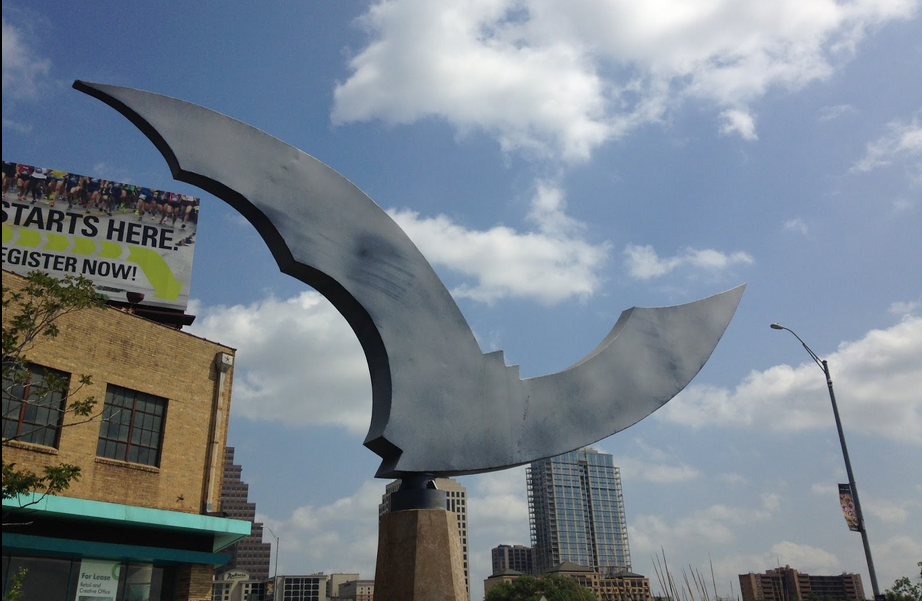When is the last time you saw the Austin bats emerge at dusk? You probably already know that the 1.5 million Mexican free-tailed bats that roost under the Ann W. Richards Congress Avenue Bridge comprise the largest urban bat colony in the world. But do you know the best way to catch them in action? Here’s everything you need to know to see bats in Austin.
SIDE NOTE: Humans weren’t the only residents hurt by the great freeze in February. Read about the effort to save the bats in Austin here.
When are the bats in Central Texas?
Mexican free-tail bats arrive in Central Texas in the early spring and hang around until the first cold front in late October to mid-November. In June, mama bats give birth to one pup, and these babies are ready to fly by mid-August (which is when emergences peak, since the colonies can double at this time of year).
What can I expect to see?
It’s good to remember that the emergence of the bats relies on many factors, including the time of year and the weather. You can call the “bat hotline” at (512) 327-9721 to see when bats have been emerging downtown. That said, some evenings, swarms of bats emerge and others, it’s hard to see much of anything at all. Loud noises and bright lights can disturb the bats and negatively impact their emergence.
Keep in mind, if you sit underneath where bats emerge, you run the risk of having guano fall on you, so you might want to bring a light jacket or a hat.
Where can I see the bats?
Downtown Austin. Of course, this is the most popular way to see bats in Austin. You have a few options on how to be a part of this natural spectacle:
- Sit on the lawn or stand on the bridge. The easiest thing to do is pack a picnic and head down to the Statesman’s Bat Observation Center in the northwest corner of the parking lot at least an hour before dusk. Street parking is available nearby, and there are several parking lots, as well, which are a bit of a longer walk. There is signage which will tell you more about the bats and you’ll be surrounded by many other families doing the same thing. If you have older kids who don’t mind standing for longer periods of time, you can find a spot on the southeastern part of the bridge about an hour before dusk. The best part is that these options are both free!
- Take a boat tour. Capital Cruises and Lone Star Riverboat both offer public sightseeing cruises which are about an hour in length and which cost $9-12 per adult and $5-$7 for kids. Departure times vary slightly, depending on what time of year it is, and you do need to arrive a bit in advance. Compared to hanging out on the ground, this is a little more comfortable, and you can usually snack on the boats while you listen to the guide tell you more about different spots along Lady Bird Lake. If you have kids who have a hard time sitting still or who have a daredevil streak, this option may be too stressful to be worthwhile.
- Canoe or kayak to the bridge. If you have your own canoe or kayak, you can get up close and personal with the bats, along with anyone else who has the same idea. Several vendors rent canoes, kayaks and paddleboards near the bridge. You can also book a bat tour with The Texas River School, which hosts a monthly Moonlight Bat Float, complete with music from local musicians and which benefits the nonprofits work to take at-risk kids for adventures on the water. Live Love Paddle also hosts bat tours.
- Enjoy the view while you eat. The north side of Lady Bird Lake has several hotels with restaurants, which claim to have the best bat watching. One casual option is Alta’s Cafe, which is located atop the Waller Creek Boathouse. There are a few piers along the north side of the Lake that also offer great vantage points to see the bats.
Round Rock. Nearly half a million bats emerge from a spot close to the intersection of IH-35 and McNeil. Head to 601 North Interstate 35 Frontage Road in Round Rock with your blankets and something to cover you in case of any guano falling from the sky. Free parking is located nearby.
Bracken Cave. Austin may be the largest urban bat colony, but Bracken Cave, located half an hour northwest of San Antonio, is the location of the world’s largest bat colony and one of the largest concentration of mammals on Earth. In 2014, the cave and land surrounding the cave came under the management of Bat Conservation International. Members have the opportunity to visit the cave certain times each year and the public can sign up for a few nights as part of a tour package with Natural Bridge Caverns.
Eckert James River Bat Cave. The Nature Conservancy manages the Eckert Cave, which is about 16 miles from Mason, Texas. Tours run from Thursdays-Sundays from mid-May until late September. Some sunrise viewings of the bats returning from their nocturnal hunts are also offered.
Old Tunnel State Park. The abandoned railroad tunnel that gives Old Tunnel its name is home to up to 3 million Mexican free-tailed bats and 3,000 cave myotis bats from May through October. Bat-viewing opportunities are available seven nights a week, and nightly educational presentations are given Thursday through Sunday. The park is located about 15 miles south of Fredericksburg. Call (866) 978-2287 to get the latest emergence time information.










